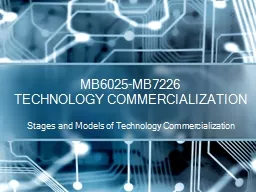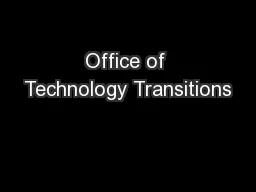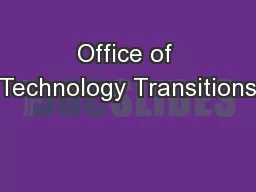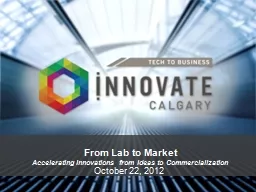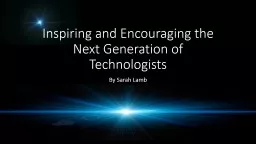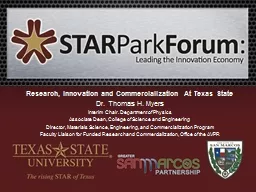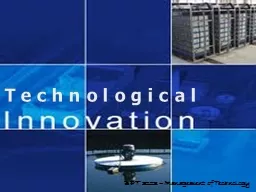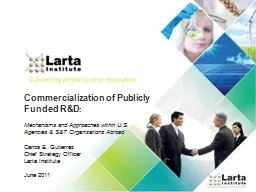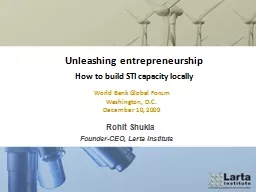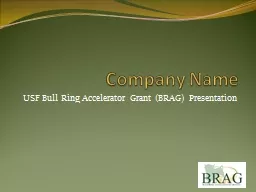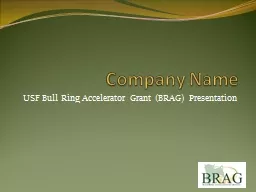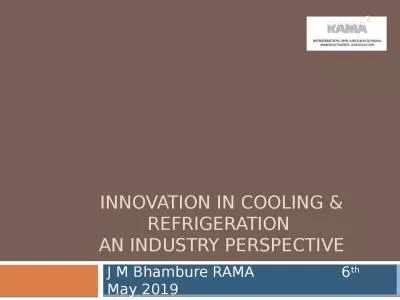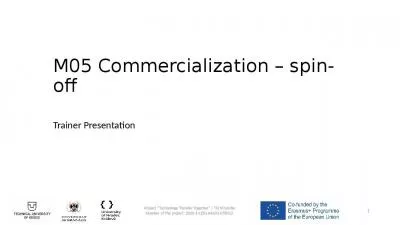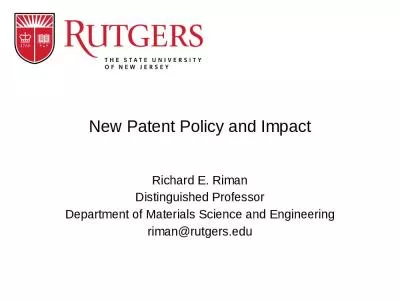PPT-Stages and Models of Technology Commercialization
Author : verticalbikers | Published Date : 2020-06-29
MB6025MB7226 TECHNOLOGY COMMERCIALIZATION OVERVIEW Konsep Penting Technology s tock of relevant knowledge that allows new techniques to be derived proper set of
Presentation Embed Code
Download Presentation
Download Presentation The PPT/PDF document "Stages and Models of Technology Commerci..." is the property of its rightful owner. Permission is granted to download and print the materials on this website for personal, non-commercial use only, and to display it on your personal computer provided you do not modify the materials and that you retain all copyright notices contained in the materials. By downloading content from our website, you accept the terms of this agreement.
Stages and Models of Technology Commercialization: Transcript
Download Rules Of Document
"Stages and Models of Technology Commercialization"The content belongs to its owner. You may download and print it for personal use, without modification, and keep all copyright notices. By downloading, you agree to these terms.
Related Documents

